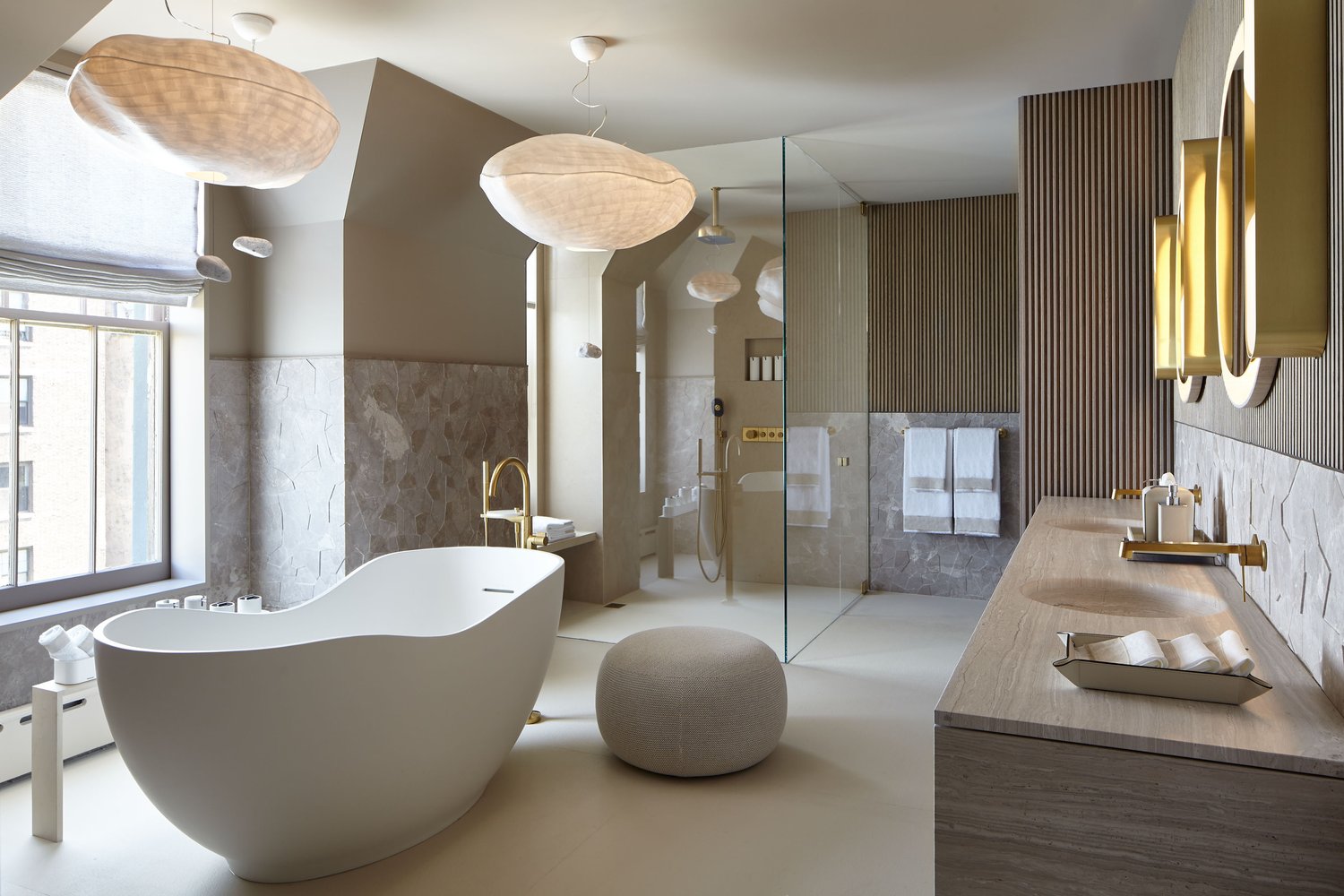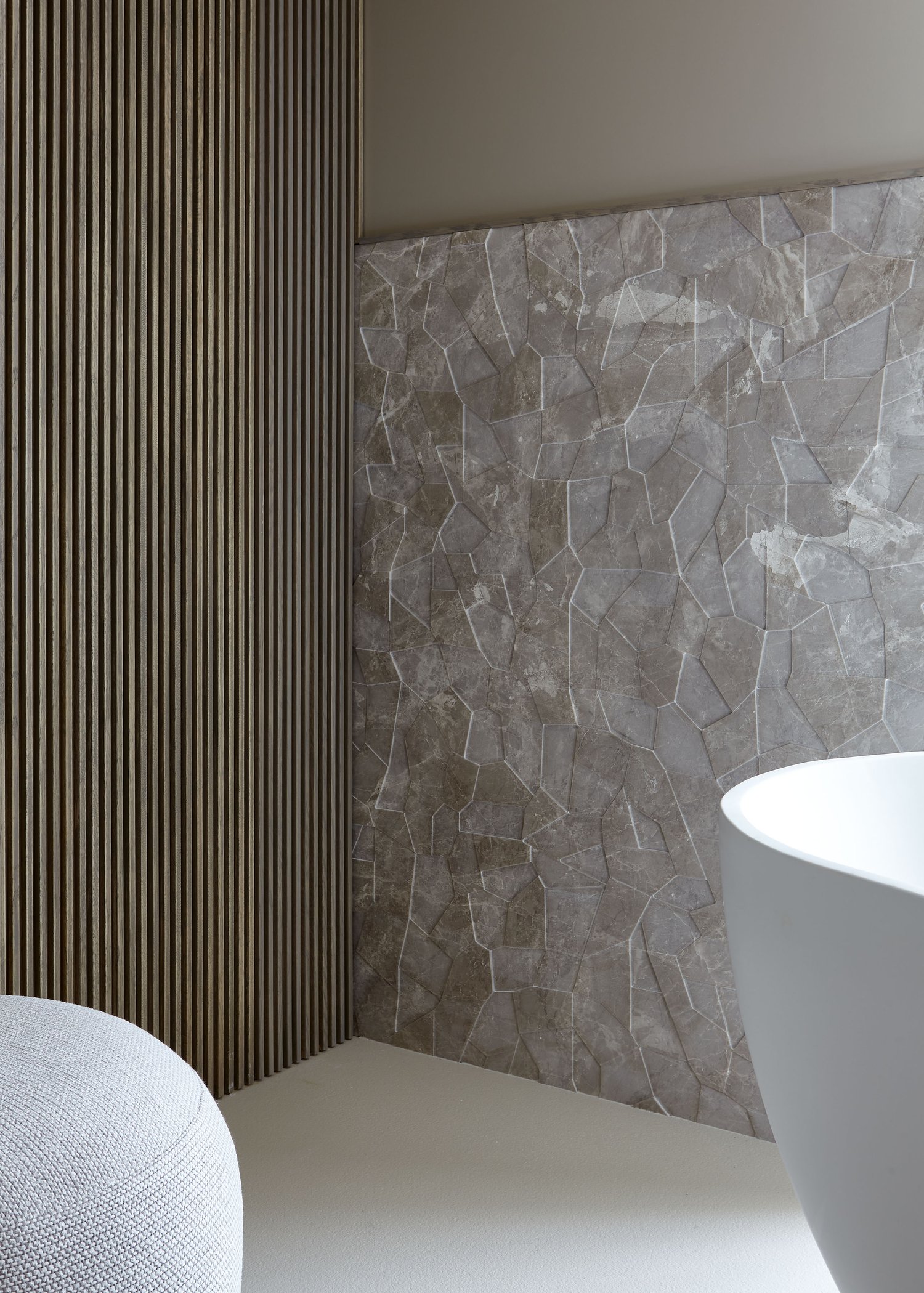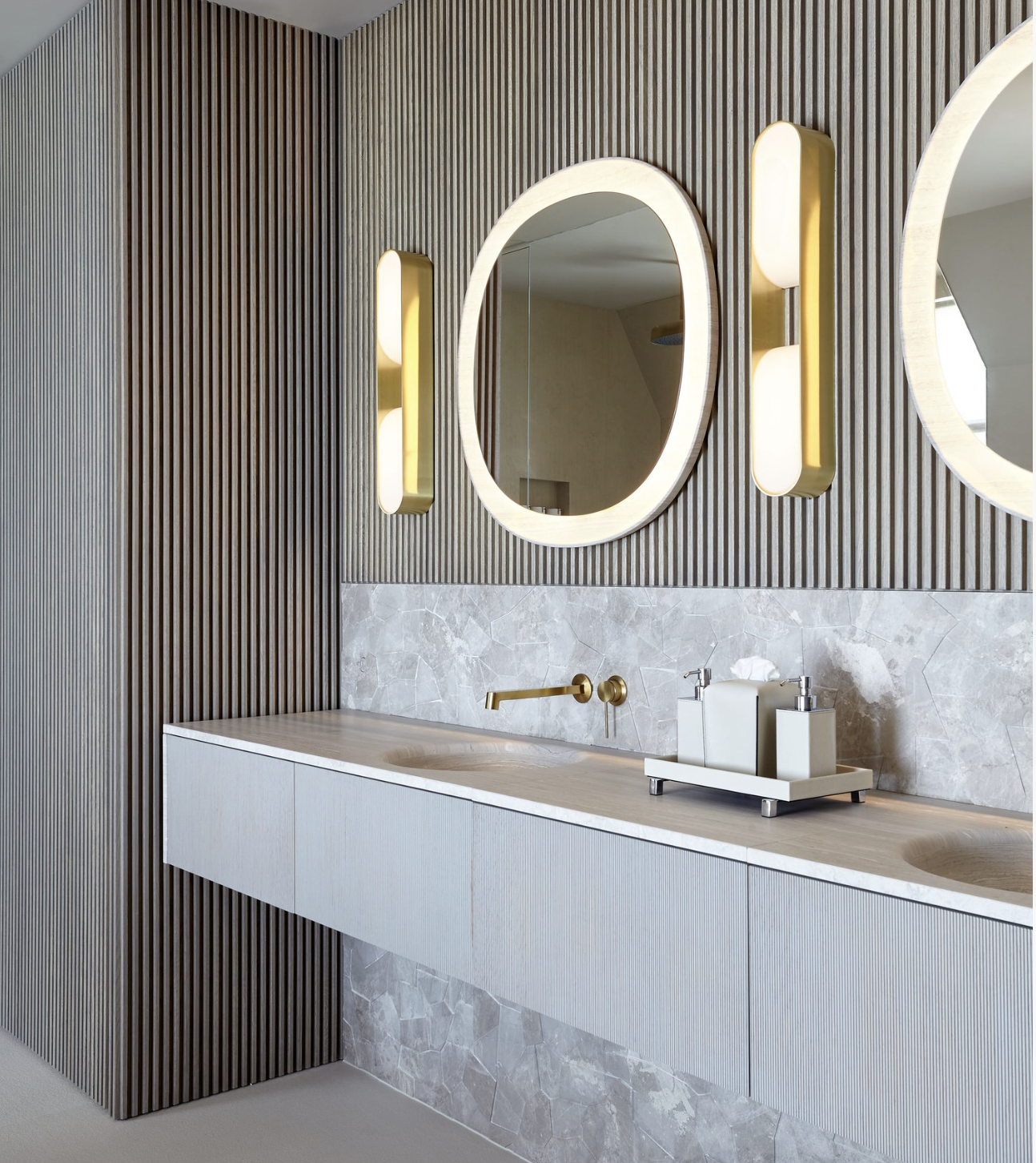Inside Borrowed Earth Collaborative's Workshop — Where Spectacular Stone Surfaces Bring the Outdoors In
With artist and entrepreneur Ruchika Grover at its helm, the Los Angeles-based tile, panel, and brick producer turns walls into textural masterpieces, adding a touch of wilderness to interior decor

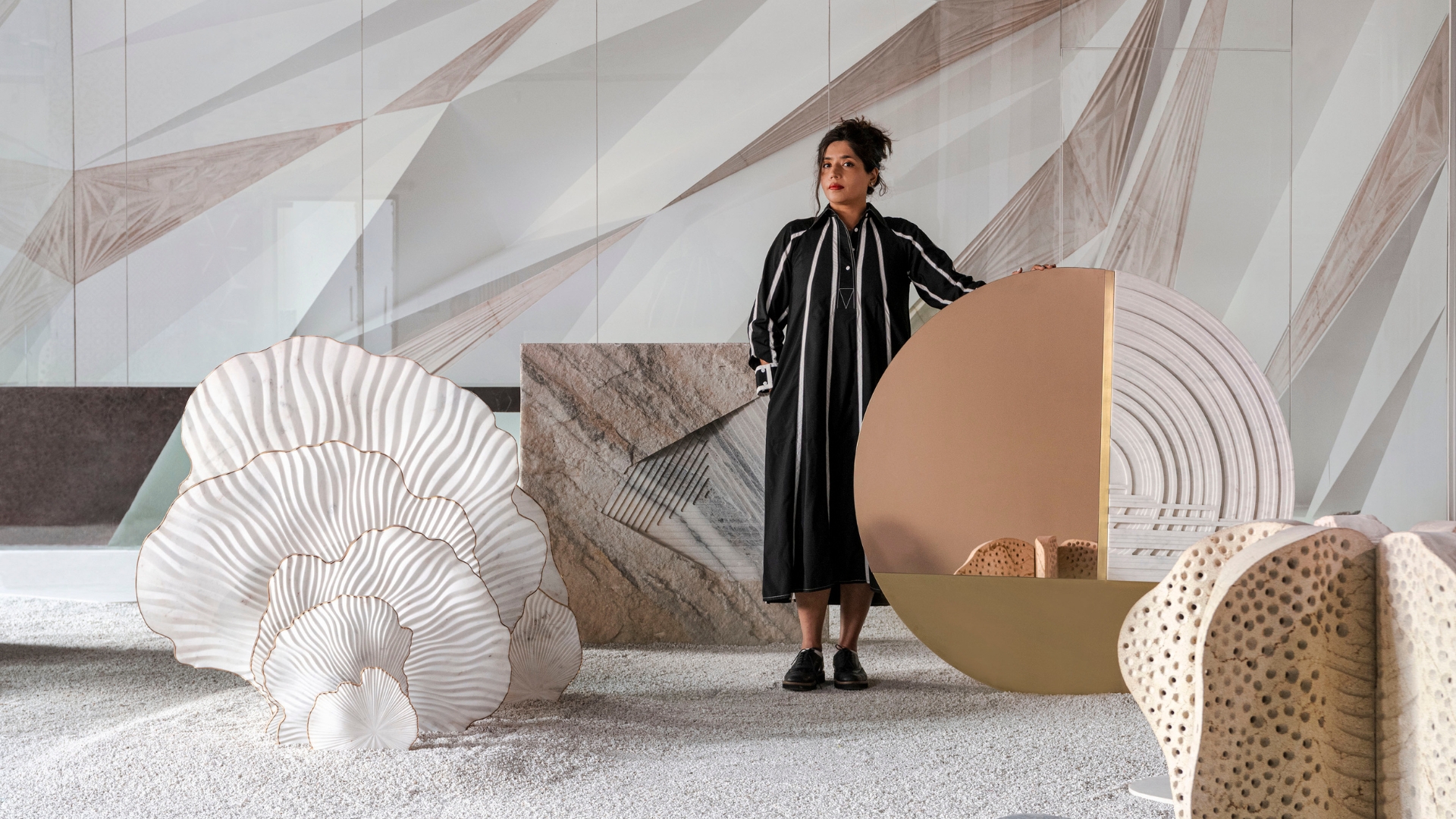
This month we are taking a moment to recognize the innovation brought about by contemporary craftsmen, makers, and emerging designers. Navigating an industry that prioritizes profit over quality, where cookie-cutter items are mass-produced at the expense of finish, originality, and the planet, artisans embody the emotional connection, human creativity, and resourcefulness necessary to deal with the challenges of today.
The brainchild of self-taught Indian artist and entrepreneur Ruchika Grover, Borrowed Earth Collaborative is a design studio that seeks to revitalize our connection with nature through the manufacturing of stone products inspired by the imperfect beauty of our surroundings. Grounded in an organic, environmentally conscious understanding of materiality and craftsmanship, it repurposes marble and limestone remnants destined to landfill into "works of architectural art" — disrupting the wasteful practices of contemporary production through creativity.
Based between its Los Angeles studio and New Delhi, Grover has spent the last few decades perfecting her approach to design through continuous research, development, and investment in state-of-the-art technologies. Her Borrowed Earth Collaborative projects bring the powerful rawness of the natural elements inside by highlighting every vein, crack, and apparent "flaw" of the original material in the end result; be it a modular surfacing collection or one of the label's sculptural installations.

Spanning tiles, panels, and bricks, the brand's characterful accent wall ideas are the ideal choice for those searching to recreate the increasingly popular indoor-outdoor living aesthetic in their homes. Still, their relevance outlives the trend cycle. Recognized as one of the leading platforms in innovative surface design, between 2015 and today Grover's studio has been collecting awards across three continents. Its Aurum series' Weave tile has just won the 2024 Interior Design HIP Award in the Hard Surface Category, while the Barococo line triumphed in the Stone + Tile Wall Category at the NYCxDesign Awards this May.
As Borrowed Earth Collaborative prepares for the launch of its new Objects Collection later this month — comprised of kitchen serveware, home accessories, and collectables — we speak to its founder and CEO about how she incorporates art into her architectural designs, what makes stone so special to her, and how technology can facilitate the shift towards a more sustainable conception of craftsmanship.
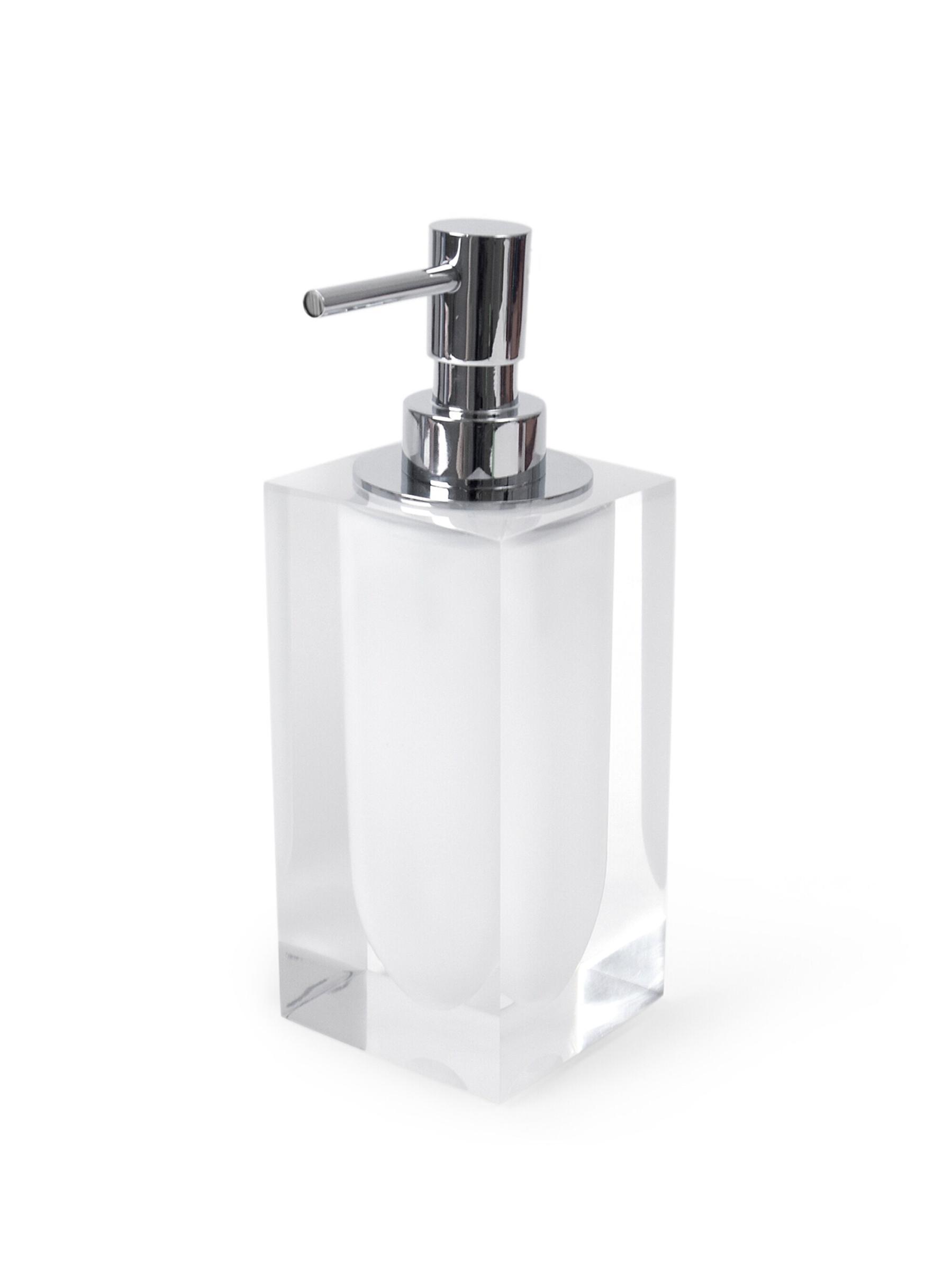
Color: Clear
Material: Acrylic
Price: $45
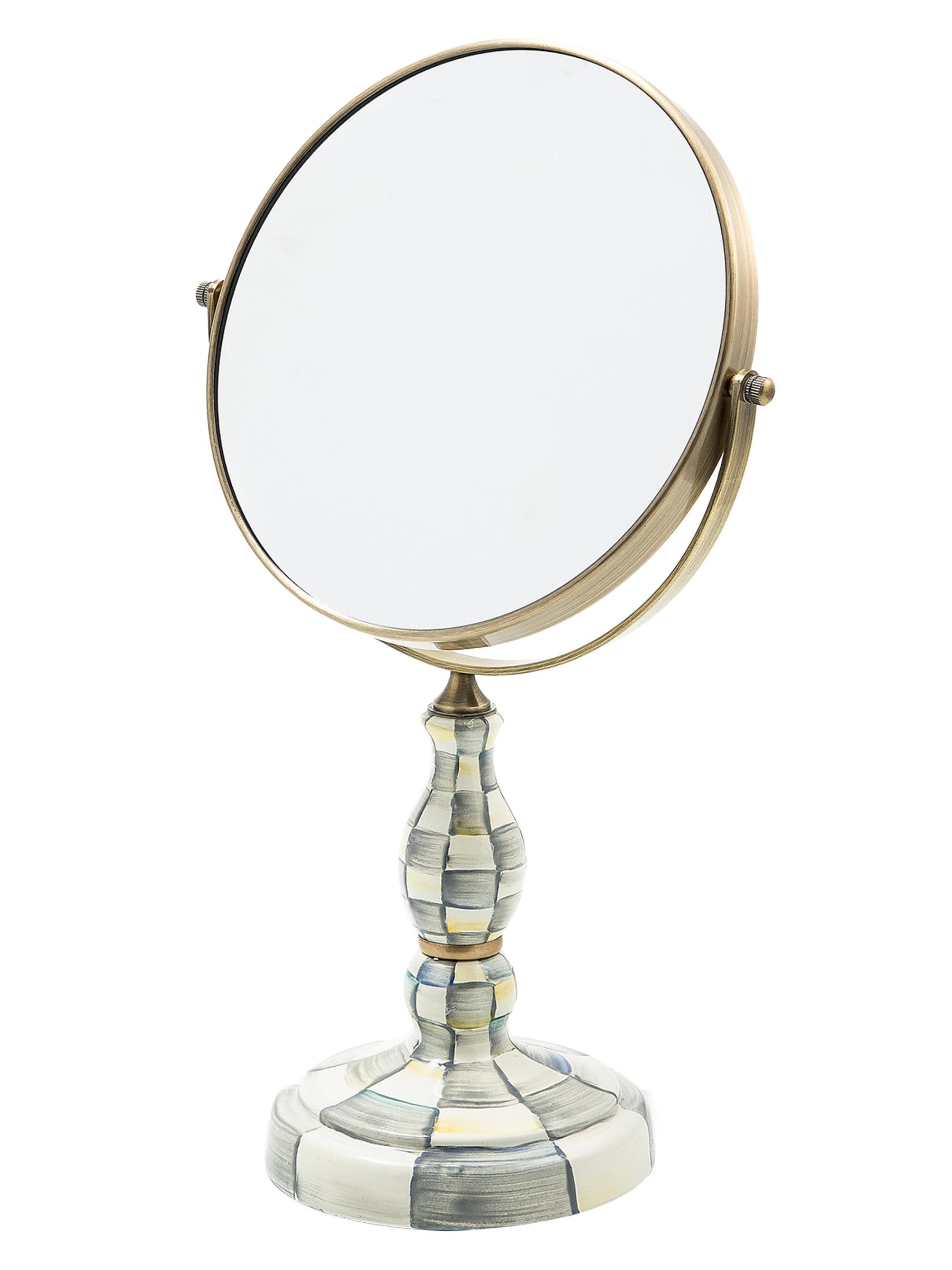
Material: Hand-Glazed Steel
Price: $167
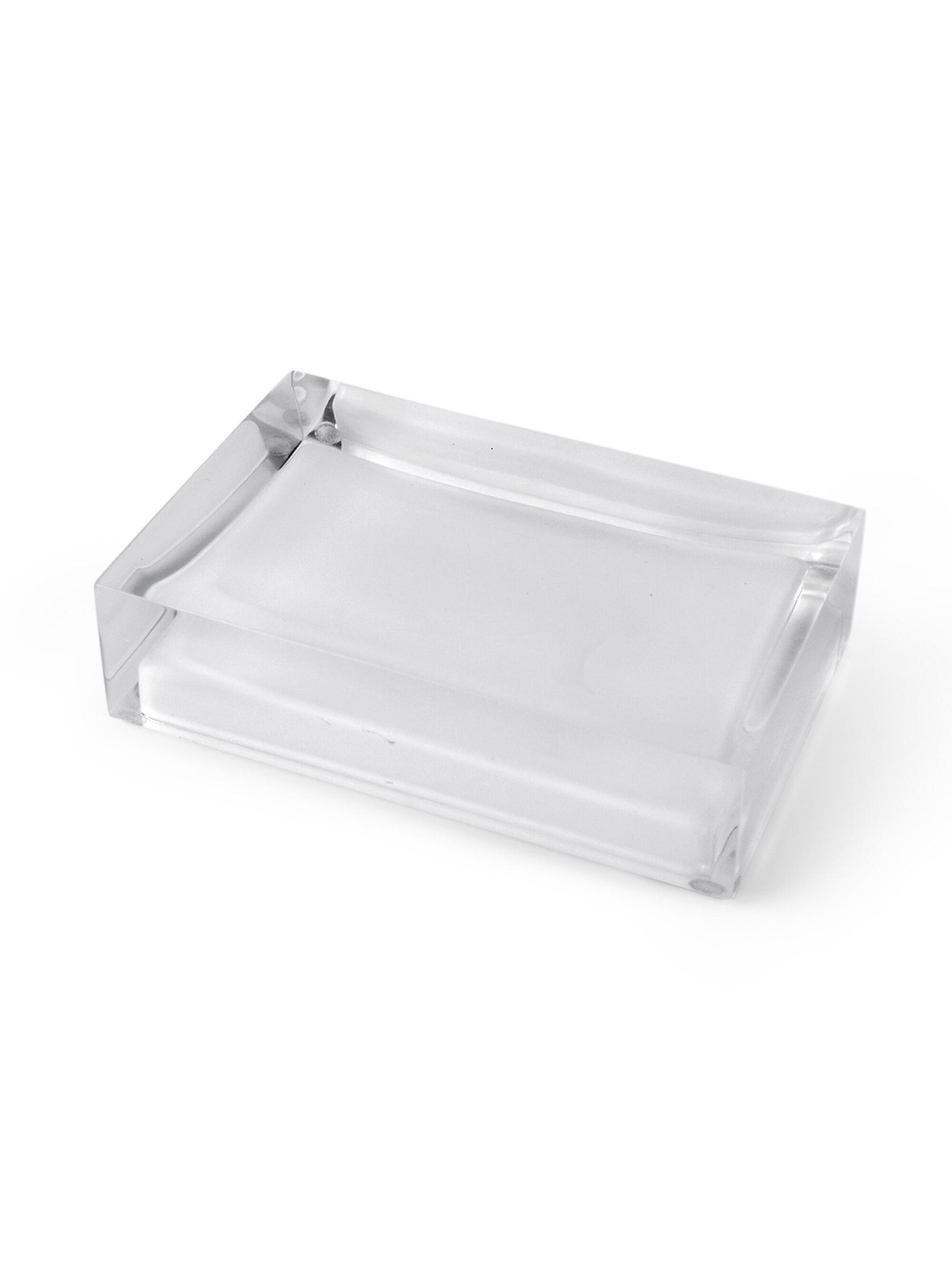
Color: Clear
Material: Acrylic
Price: $25
What can you tell us about the years that preceded Borrowed Earth Collaborative?
Ruchika Grover: My journey into art, my primary medium, was sparked by my formative years traveling with my father, a marble and granite trader. From the age of 14, I delved into the universe of natural stone, selecting materials from quarries around the world. This early exposure fostered a profound respect for its inherent beauty and possibilities. Despite pursuing a formal education in business and entrepreneurship, my passion for art led me to establish a vertically integrated studio. Over the past 16 years, I have seamlessly merged art, design, and architecture to transform natural stone into bespoke installations that celebrate materiality and innovation.
What made you settle on this medium, specifically?
The Livingetc newsletters are your inside source for what’s shaping interiors now - and what’s next. Discover trend forecasts, smart style ideas, and curated shopping inspiration that brings design to life. Subscribe today and stay ahead of the curve.
RG: The decision to focus on natural stone stemmed from my deep-rooted connection to the material, cultivated through my early experiences with my father. Its unique textures and colors offer endless creative possibilities, serving as a canvas that narrates its own story. I was captivated by the challenge of turning this formidable medium into expressive, functional art. To unlock its potential, I combined traditional craftsmanship with cutting-edge technology, exploring intricate patterns and forms that would otherwise be unachievable. This approach has enabled me to push the boundaries of what stone can represent in contemporary design.

Where do you look for inspiration?
RG: My practice is deeply influenced by the rich cultural and environmental contexts I have encountered throughout my travels. Each piece of stone carries its origin's unique story, which I aim to highlight in my work. By integrating traditional craftsmanship with contemporary design, I contribute to a dynamic dialogue between past and present. My focus on sustainable practices ensures that this dialogue evolves responsibly, respecting the environment while pushing the boundaries of natural stone's potential.
Is there a project you feel particularly proud of, or attached to?
RG: From a personal point of view, my collaborations with American architect Tony Ingrao have been most fulfilling so far. He is one of the few designers who has been able to integrate the potential of stone on an architectural scale, and not simply as a decorative element. We have worked together on sculptural skins for projects in New York, Miami, and Los Angeles, all of which challenge the perception of what can be realized with natural stone. They are larger-than-life installations that took several years and an intercontinental army of people to realize, but are truly inspirational. Each of them involved intricate collaborations with skilled artisans, and advanced technology to achieve the desired complexity and elegance. These partnerships embody my commitment to blending traditional craftsmanship with contemporary aesthetics, reflecting my ongoing journey to innovate within the realm of natural materials.
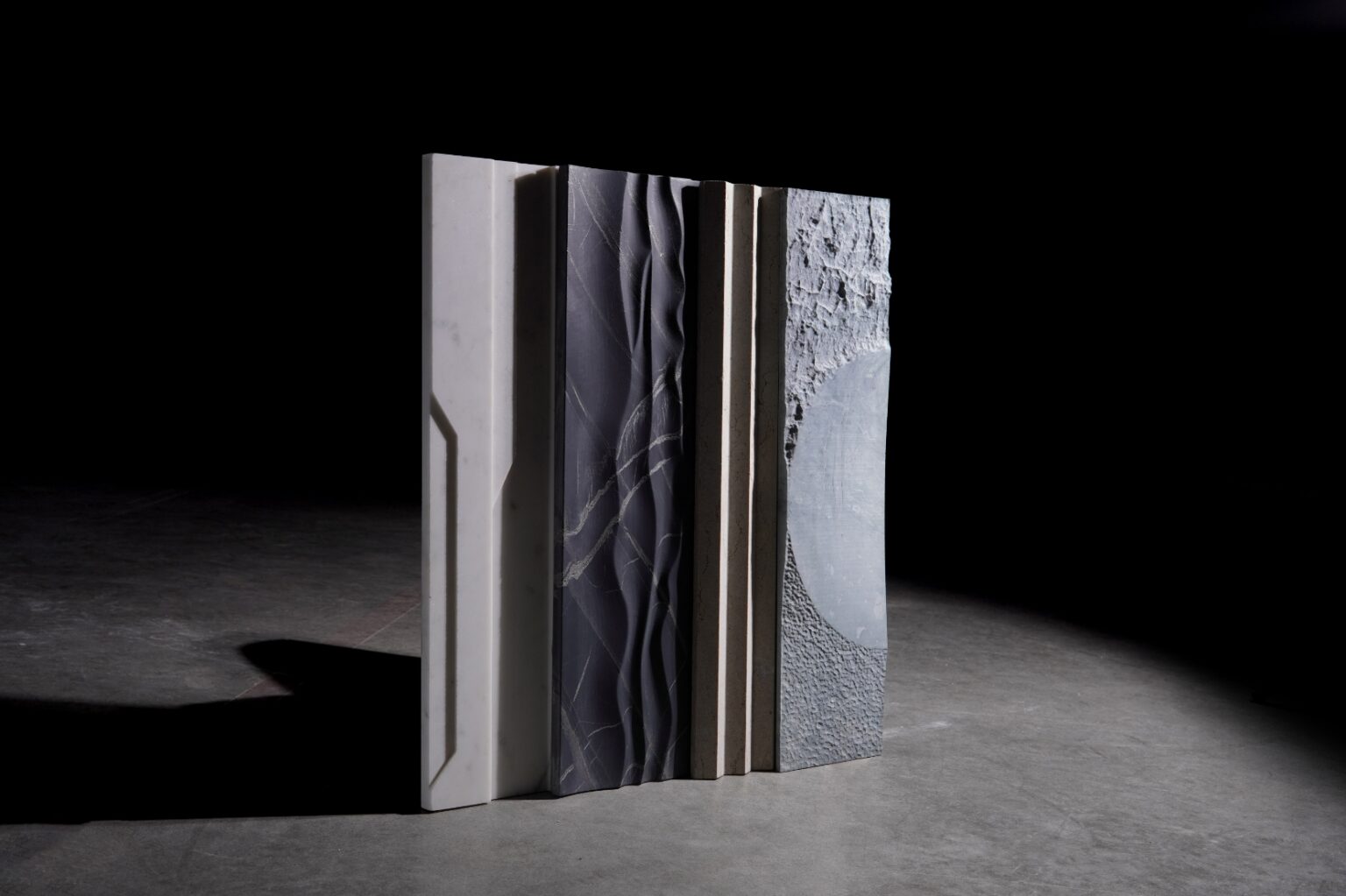
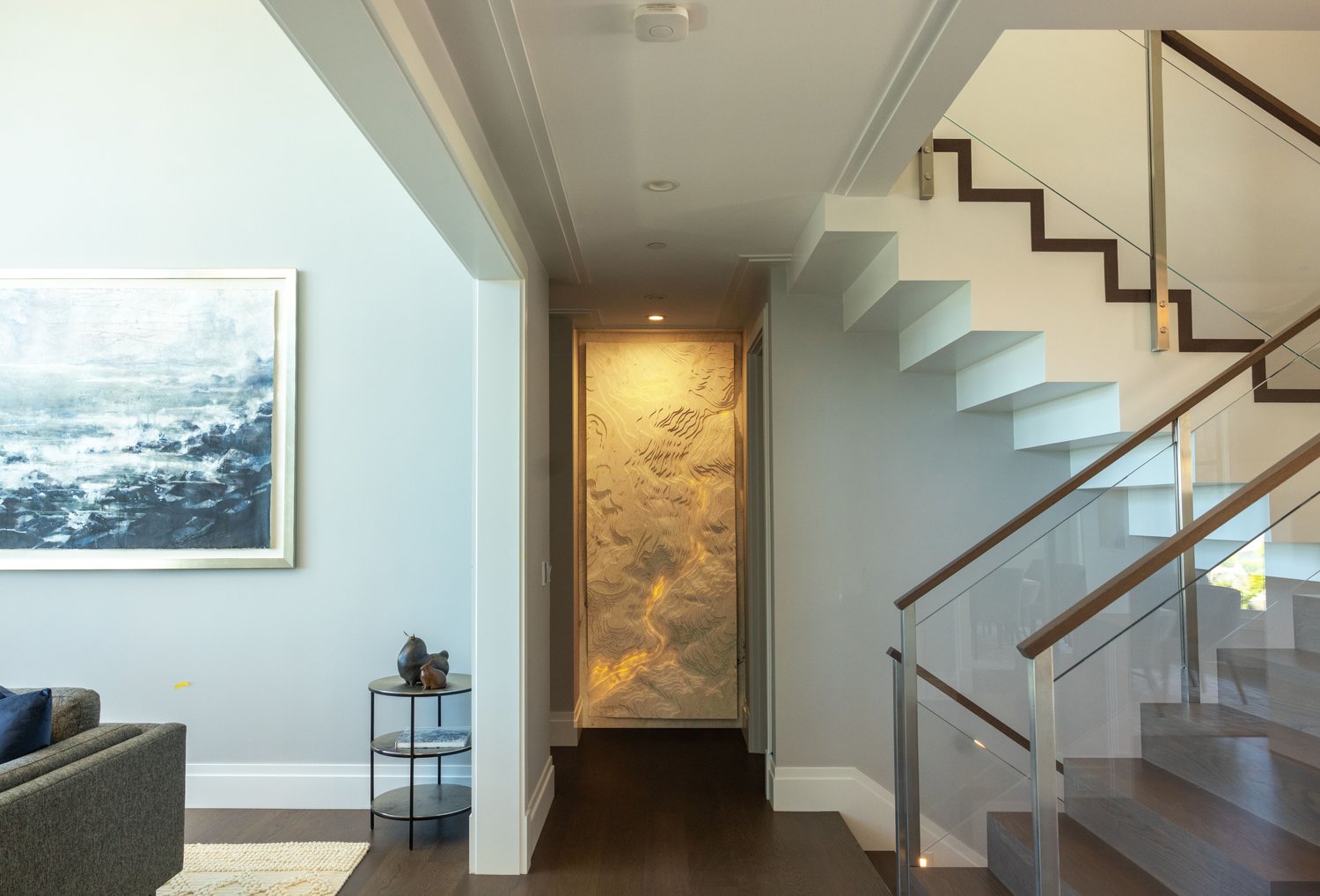
Can you tell us about a fellow creative you are obsessed with at the moment?
RG: I have been truly fascinated by the work of British artist and photographer Reuben Wu. He creates drone light sculptures in gorgeous natural landscapes and captures them as photographs. I am blown away by his craft, not only because of my obsession with natural formations, but also because of how it proves that lighting can truly transform how anything is perceived. When I finish my sculptural garden, I am planning on collaborating with him to capture the spaces through his eyes by integrating the light sculptures in there.
What does craftsmanship means to you today? What makes it relevant to the society we live in?
RG: Authentic craftsmanship and constant innovation are more vital than ever in a world dominated by mass-produced items. It represents a commitment to individuality, quality, and integrity that cannot be replicated by cookie-cutter approaches, besides supporting the artisan community and traditional craft. True craftsmanship honors the uniqueness of materials and the skill of the artisan, offering products that are not only aesthetically distinct but also culturally and environmentally meaningful. In an era where design often lacks depth and authenticity, genuine craftsmanship provides a vital counterpoint, celebrating the beauty of handmade, bespoke creations and the stories they tell.

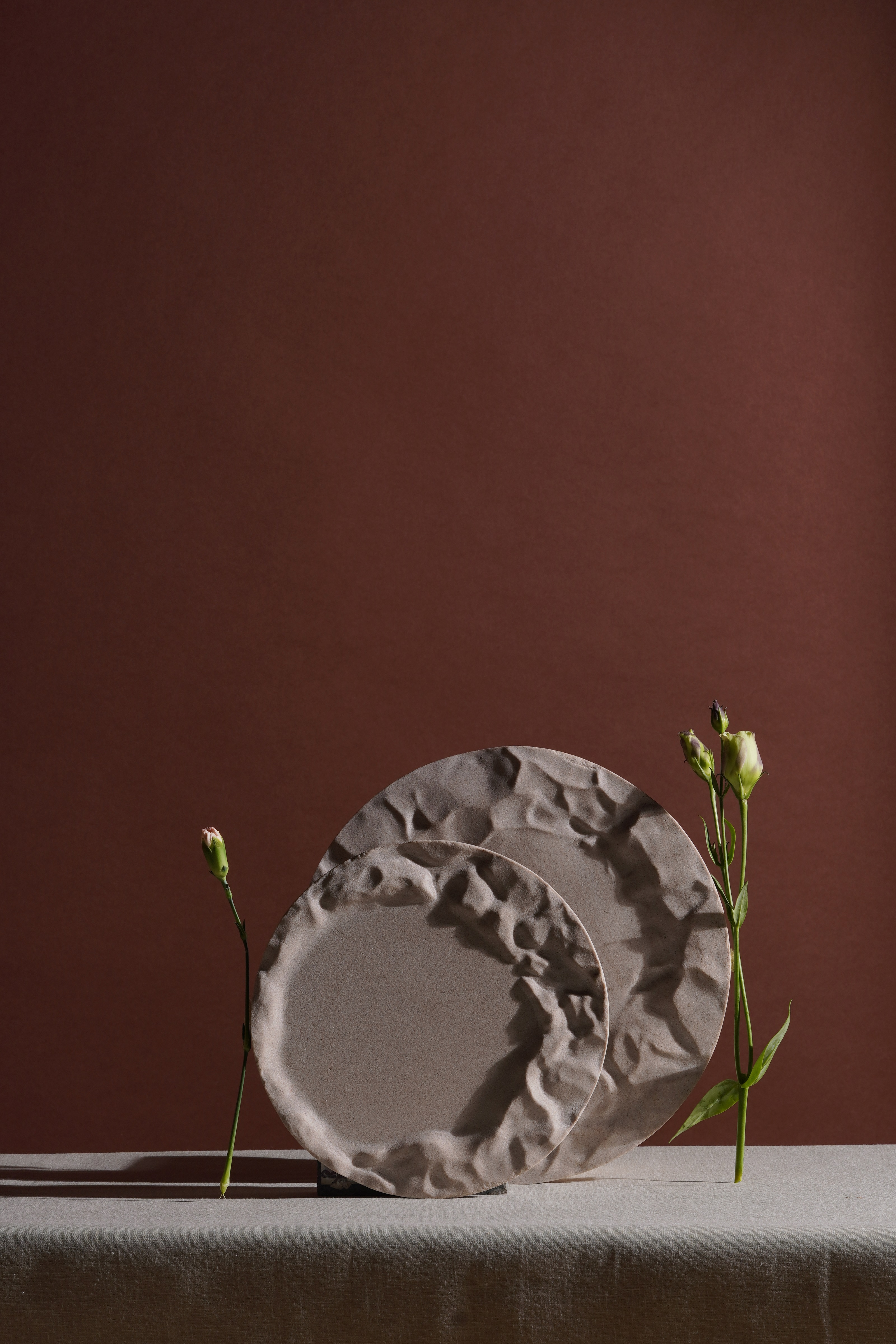
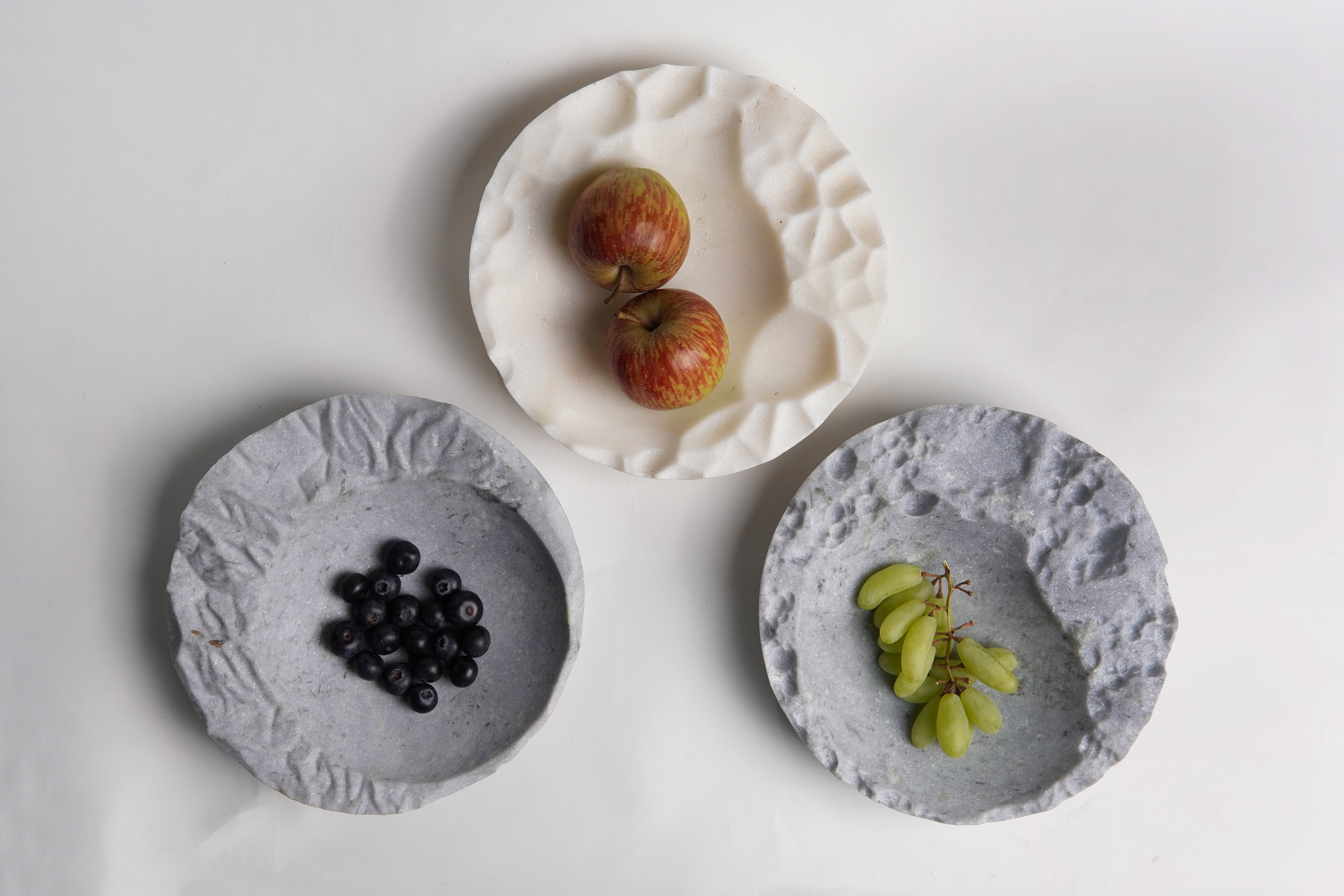

Consider the state of design and artisanry today: what do you think is missing, currently, and how are you planning on remedying that in the years to come?
RG: I would like to see more emphasis on eco-friendly practices and materials, as well as a deeper exploration of how traditional techniques can intersect with modern technology. It is crucial for the future of craftsmanship to balance respect for traditional methods with the need for environmental responsibility.
My contribution will focus on pioneering new approaches that merge artistry with sustainability, demonstrating that excellence in craftsmanship can coexist with a commitment to protecting our planet.
Borrowed Earth Collaborative's Objects Collection launches later this month.
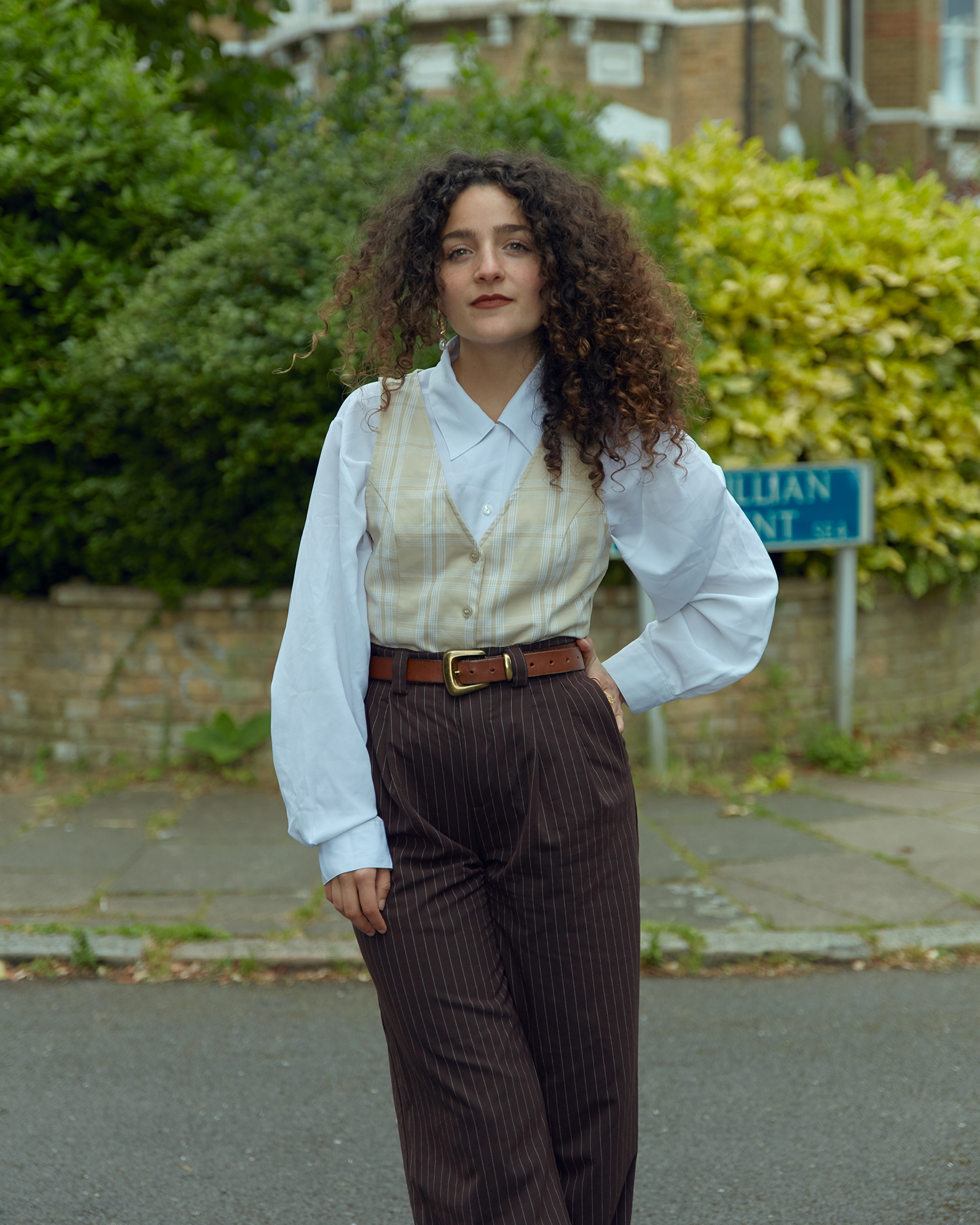
Gilda Bruno is Livingetc's Lifestyle Editor. Before joining the team, she worked as an Editorial Assistant on the print edition of AnOther Magazine and as a freelance Sub-Editor on the Life & Arts desk of the Financial Times. Between 2020 and today, Gilda's arts and culture writing has appeared in a number of books and publications including Apartamento’s Liguria: Recipes & Wanderings Along the Italian Riviera, Sam Wright’s debut monograph The City of the Sun, The British Journal of Photography, DAZED, Document Journal, Elephant, The Face, Family Style, Foam, Il Giornale dell’Arte, HUCK, Hunger, i-D, PAPER, Re-Edition, VICE, Vogue Italia, and WePresent.
